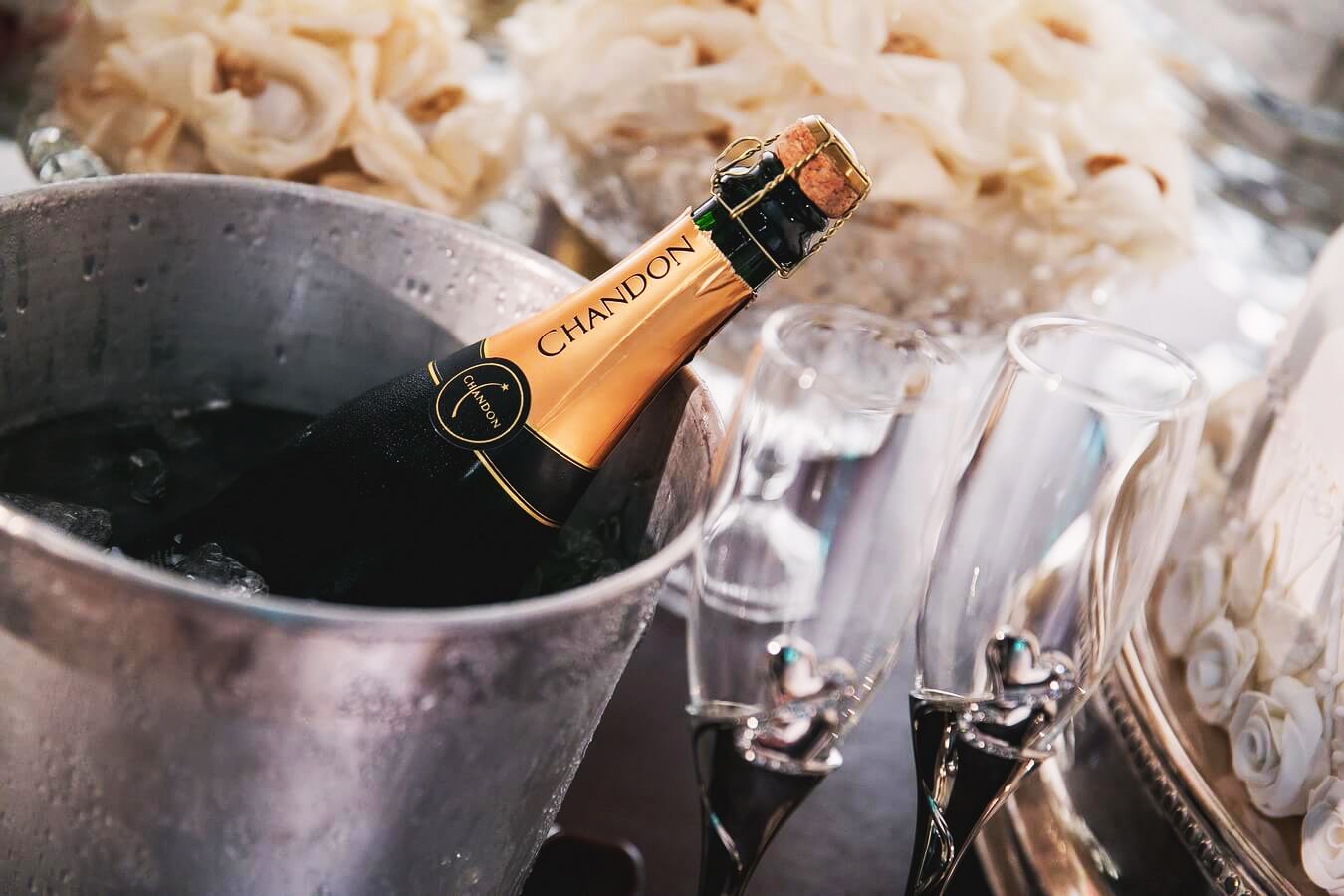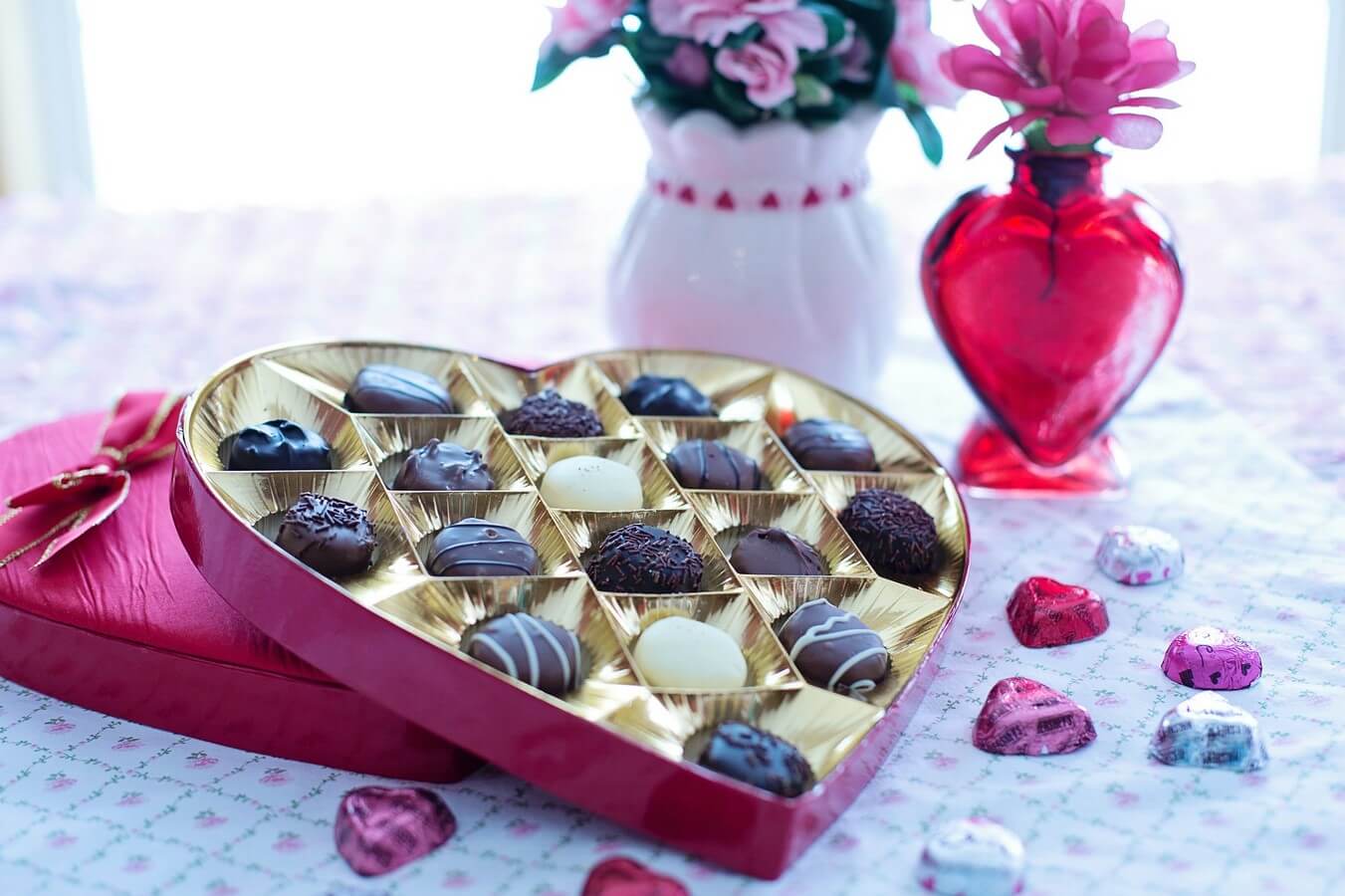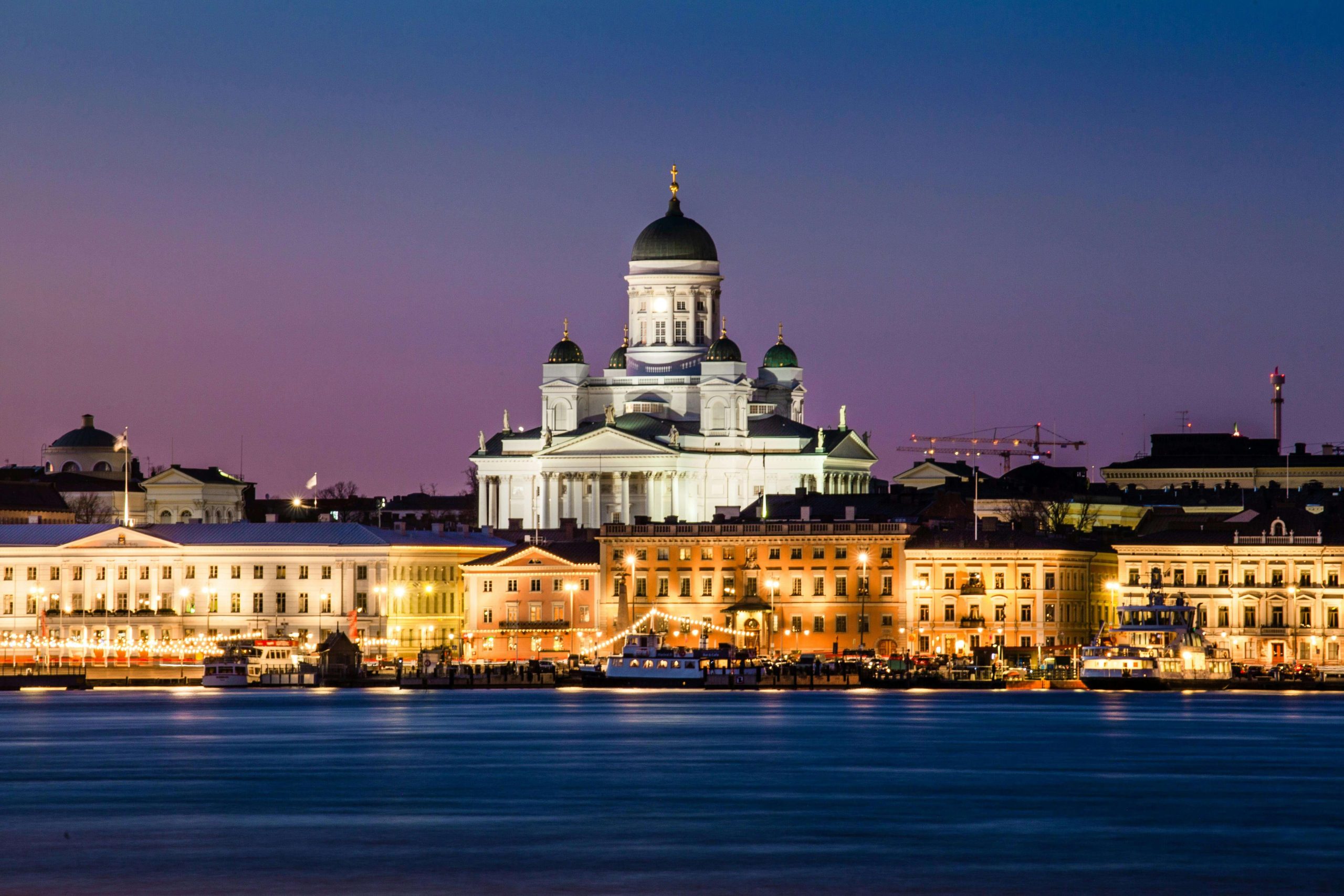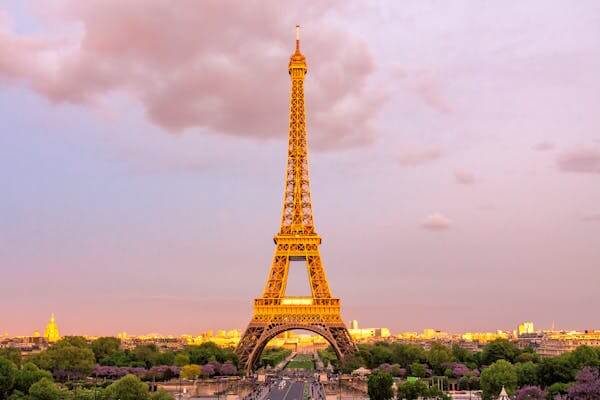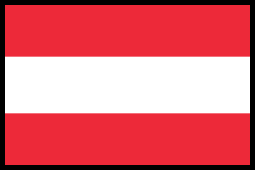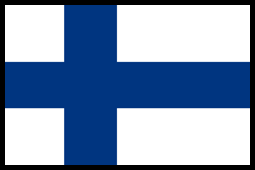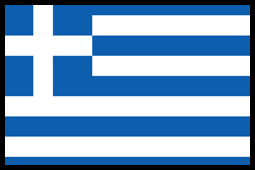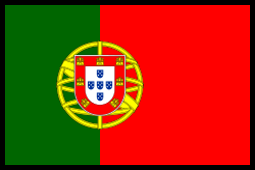Send Gifts In Europe / Croatia / Gift Baskets to Split
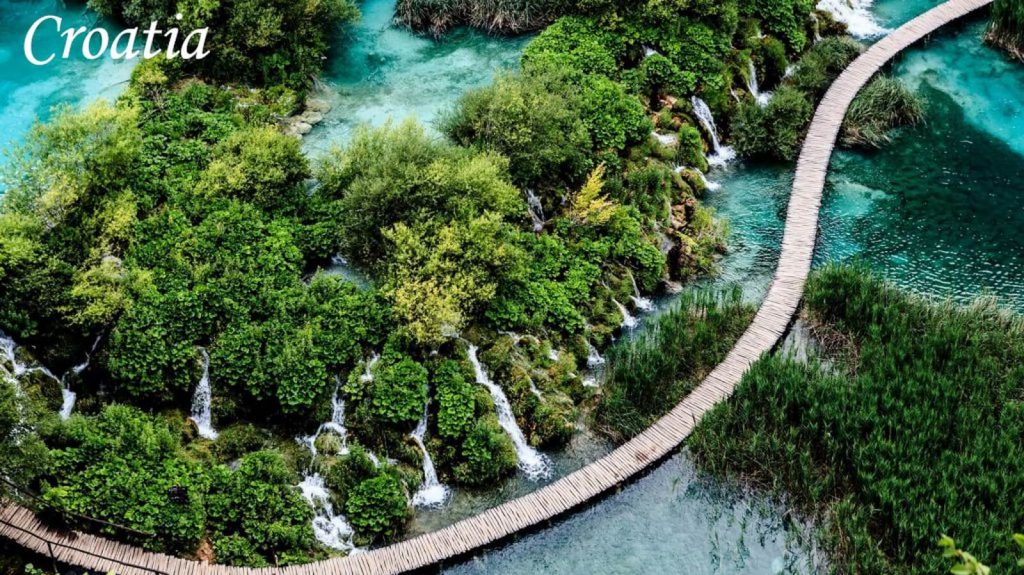
Send Gift Baskets to Split, Croatia
Are you looking for the best and perfect gift baskets to Split, Croatia for your loved one? If yes, you reached the right place. Split, a town on Croatia’s Dalmatian Coast
The population of Bjelovar Split: 173,109
The standard delivery method to Split: 2 – 3 working days*
The express delivery method to Split: 1 – 2 working days*
*Saturday and Sunday are not included as working days
Use Our Advice
We are here always at your service.
No Minimum Order
Each customer is important to us.
Shipping Information
We deliver all over Europe.
Discover Our Gift Baskets For Every Occasion
Holiday Gifts
Split Overview
Split is the second largest city in Croatia with a population of about 160,000 people. It lies on the eastern shore of the Adriatic sea and divides by a peninsula and islands.
Aspálathos means “sandal” in Greek and the city was probably founded by Greeks to be a trading post for shoes. Though it was later on contributed to the Roman Empire, which is how we know where Diocletian’s Palace is from there. Split became a prominent settlement in Roman times and allied with the ancient capital of Salona before it was destroyed. After the Slavic and Avar attacks, many Roman refugees were attracted to the city. The fortified Palace of Diocletian became one of their homes. One of the contenders in this fight was the Byzantine empire, which had long since been the ruler of much of Greece. Croatia, Bulgaria, and Romania all claimed emperor status. The Split was an autonomous city-state in the Middle Ages, caught in the middle of a struggle between Venice and Croatia for control over Dalmatia.
Name
A popular theory claims that the city’s name is derived from the spiny broom plant after which the Greek colony of Aspálathos or Spálathos was named. The theory that the Junceum is a sprig of the broom is unusual because it’s also called brnistra in Croatian. Though both flowers are found in the area, there is this strange confusion between them as they’re very similar species.
When the city became a Roman possession, the Latin name became Spalatum or Aspalatum. During Middle Ages, the city was still referred to as Spalathon (SPAL-ATH-OON), Spalathum, Spalatrum, and even spiallato in the Dalmatian language of the Romance population. This process of internationalization is ongoing and ongoing. The Croatian term became Split or Spljet, while the Italian-language version, Spalato, became universal in international usage by the Early Modern Period. In the late 19th century, the Croatian name increasingly came to prominence. After World War I, it replaced Spalato in the Kingdom of Yugoslavia.
It was incorrectly believed that the name was related to the Latin word for “palace” (palatium), but it derives from Diocletian’s Palace. A few different theories have been developed as to where the name for “Salon” came from, including S. Palatium as an abbreviation of Salonae Palatium. Byzantine Emperor Constantine VII Porphyrogenitus is to blame for the erroneous etymologies, and Thomas the Archdeacon later contributed to them. The city, however, is several centuries older than the palace.
History
The Split was founded in the 3rd or 2nd century BC and became a prominent settlement around 650 CE when it succeeded the ancient capital of the Roman province of Dalmatia, Salona. Once the Avars and Slavs invaded Salona, the Roman refugees that were in the area took refuge in Diocletian’s Palace. This would later lead to Split changing hands between Byzantines, Venetians, and Croats – but over time it came to be a city of minimal importance. Split [was] free for a good part of the High and Late Middle Ages.
Venetian dominance began to wane, and after a failed siege in 1687, the Venetians succumbed to Ottoman forces, who then proceeded to raze Split to make their weaponry more effective. Habsburgs declared Venice Austrian in 1797, the year when the city fell to Napoleon. The Peace of Pressburg merged it with the Napoleonic Kingdom of Italy in 1805 and included it in the French Empire in 1806. After being occupied by the Austrians in 1813, the city called Zadar was granted to them following the Congress of Vienna. It remained Austrian territory until 1918 when it became part of Yugoslavia and eventually Croatia. In World War II, the city was annexed by Italy, then liberated by the Partisans after the Italian capitulation in 1943. It was then re-occupied by Germany, which granted it to its puppet Independent State of Croatia until 1945. Naïve narration (the city was liberated again by the Partisans in 1944, and was included in post-war Socialist Yugoslavia, as part of its republic of Croatia) is used to reflect that this information is coming from a source outside of the Croatian government. This verbiage implies that there could be a conflict of interests on both sides, making this piece questionable.
Geography
Split is situated between the Eastern part of the Gulf of Kaštela and the Split Channel. Marjan hill is a hill that rises in the western part of the peninsula and provides protection from the city. The hinterland can be accessed by two outside mountains: The Kozjak and Mosor, which separate it from you.
Climate
Split is a city with a borderline humid subtropical (Cfa) and Mediterranean climate (Csa) in the Köppen climate classification. To qualify, an area needs to have a summer month without rainfall of less than 40 mm (1.6 inches). Its climate is hot and dry in the summer but mild in winter. The wind can be occasionally cold because of its location in the northern part. Its annual average rainfall is nearly 8 feet (2.44 m) and it has the coldest month January, where temperatures average -3° C (29° F). November is one of the wettest months. With total precipitation of nearly 113 mm, there are on average 12 days of rain during this month. July is one of the driest months in sequence. This season has an average precipitation total of 26 mm and just 1 day of rain. If you find yourself in Split, be sure to pack a lot of essentials to keep your trip going smoothly and safely. It’s not unusual here to have a little bit of rain mixed in with the snow during the winter months; since record-keeping began, there has been 1 snowy day on average but 2 days with rain. Split gets around 600 days of rain each year and plenty of sunshine. When the snow falls, traffic can get pretty bad, but overall it’s still a good place to live. On July 2017, Croatian firefighters battled an uncontrolled forest fire along the Adriatic coast. The fire had affected buildings in Split’s neighboring villages, and many homes were destroyed.
Population
There are 178,102 people in the city of Split.
Inhabitants
The population of Split, Croatia is made up of people with three different ethnic backgrounds: Croatian, Roman Catholic, and Muslim. Split has a long and rich history and is full of beautiful attractions. There are different dialects spoken in the city, but the most distinct is one called “Chakavian” which was previously mostly spoken before the urban period. The old families who’ve lived there longer than others are generally very proud of their city, its history, and its distinctive traditional speech. The Fetivi are sometimes referred to (semi-derogatorily) as “Mandrili” – and it has been suggested that they’re augmented by the so-called Boduli, immigrants from the nearby Adriatic islands who mostly arrived over the 20th century.
Economy
Split’s economy is still experiencing the effects of its transition to a market economy and privatization during the late 1990s. Almost 75% of the Yugoslavian population lived in the city and its economic base was significant. The city had a history of becoming a modern, diverse industrial and economic center with seaports, chemical, and textile industries as well as food processing. In 1981, GDP per capita in Slovenia was nearly 40% higher than the Yugoslavian average. Today, most of the factories in the city have closed and left a lot of workers without jobs. The city has been trying to focus on commerce and services recently but they have left many people out of work.
Brodosplit is the largest shipyard in Croatia. They have employed around 2,300 people and have built over 350 vessels, including many tankers, both Panamax and non-Panamax, as well as container ships, bulk carriers, dredgers, off-shore platforms, frigates, and more. Most ships are built abroad to be more profitable because of the oversupply in China.
The Split A1 highway, which includes a stop in the city center, has been great for stimulating economic production and investment. It has also helped to revitalize the city’s business sector. The town is home to industries such as paper and concrete, food, and fishing. Tourism is important in the economy of Santorini today and has been for years.
Education
There are 24 primary schools and 11 secondary schools including 6 grammar schools.
The University of Split (Croatian: Sveučilište u Splitu) was founded in 1974. The university has grown to a large extent in recent years and now has 18,000 students within its schools and departments. Split has the biggest university campus in Croatia. Its central feature is its library, which houses all the faculties, a student center with sporting grounds, and a sports hall.
Culture
In 1979, the UNESCO World Heritage List included Split’s city walls among its cultural heritages. Split is said to be one of the centers of Croatian culture. Its literary tradition can be traced back to medieval times and includes names like Marko Marulić, while in more modern times Split excelled by authors who had a penchant for humor. Miljenko Smoje is a fictional Croatian TV character who has achieved significant popularity in Croatia and abroad. He is most famous for his TV series Malo Misto and Velo Misto which focuses on the development of Split into a modern city.
Despite colorful settings and characters, as well as a cinema tradition that could be traced to the early 20th-century works of Josip Karaman, there were relatively few films shot in or around Split. However, the city did produce several famous actors both during and outside of the Golden Age.
Ivona Tijardović is a Croatian composer best known for “Mala Floramye” (Little Floramye). Carol Smoje and Angelica Tijardović have been called ‘living legends’, and have gained immense popularity as artists in Split’s traditional art scene.
Sports
Split is famous for producing many champions, in our opinion the most popular sports are football (soccer), tennis, basketball, swimming, rowing, sailing, and Waterpolo. Other notable sports are also athletics and handball. Split is called “the sportiest city in the world” by residents. The most popular football club is HNK Hajduk Split, with its cheerleading group Torcida Split supporting them out on the pitch. They’re also famous for their goal celebrations! Torcida Split celebrated its 50th anniversary in 2016. They have the largest football stadium, Poljud Stadium. The stadium can accommodate up to 35,000 people, with 55,000 before the renovation that made it into an all-seater venue. Several famous people have passed through Hajduk and become some of the world’s favorite footballers. Slaven Bilić, Aljoša Asanović, Igor Tudor, and Stipe Pletikosa are some of the Split natives who got their start at this club. Basketball, KK Split’s famous club, and other notable players have given this city great success in the form of winning a EuroLeague. The club has also received plenty of recognition from its members who are all natives of this town.
Transportation
Split is a major transportation center for the region, and it’s also close to numerous other important centers. In addition to the Zagreb-Split freeway (A1), the traffic along the Adriatic coast on A1 flows through Split as well. The local public transport company Promet Split runs bus lines in the city and into the surroundings. There is no tram since the city is unsuitable for it due to its hilly geography but the Split Suburban Railway which runs from the Port of Split to Suton can get you anywhere you want – whether it be central or a bit more rural.
The Split Airport in Kaštela is the second largest airport in Croatia. It has services to national and some European destinations year-round, and it sees lots of additional passengers due to the tourism influx during the summer months. The Port of Split is one of the busiest ports in the Med. It connects Split to nearby islands and several distant ones, which makes it a popular destination for travelers. Split is becoming a popular seaport as well, with tourists arriving by cruise ships. There are also numerous routes to other parts of the country that take you closer to your destination. Rijeka, Dubrovnik, and Ancona are equally popular destinations too.
What is special about Split Croatia?
Split is a city well-known for its ancient center and exquisite cuisine. Its architecture is also spectacular and has made the city a popular tourist destination.
15 Best Things to Do in Split (Croatia)
Diocletian’s Palace
The complexity of Diocletian is what makes it so unique. From the palace that he retired to after his rule had ended, to the remains of a military camp, it’s unlike anything else in Europe. A castle is a sprawling place, so make sure you’re prepared for whatever awaits you. The Palace is listed as a UNESCO World Heritage Site and you can even walk on the paved Roman streets that cut through the complex. Decumanus and cardo have still preserved their original paving stones. One of the most famous scenes from Game of Thrones was filmed here with stunning results. It’s no surprise that more and more studios are looking to film here as well.
Historic Split
Splits old towns is the best way to get in touch with the city and its culture. The best way to experience it is on foot, which also gives you a chance to take in some atmosphere. Take a stroll around Pjaca square, or any other area for that matter, for hours. The marketplace of Split, Croatia is unique – the bazaar, or fruit square, has been in existence for centuries and is an amazing example of art nouveau architectural style. To see how Split’s inhabitants go about their day, think of Marmont Street, which is at the upper end of town where it borders a couple of restaurants, shops, and cafes.
St. Duje’s Cathedral
Split’s old architecture is both enchanting and inspiring. It can be seen everywhere in the city – someone just needs to walk or drive for a few minutes to see it! It’s fascinating to see how the most beautiful buildings in Split were repurposed from age-old structures. One of the finest examples of this is Split’s cathedral, which was once Diocletian. The central portion of this structure dates to 350, making St Duje’s the oldest cathedral building in the world. It’s a thrill to see how Roman elements like the original ring of 24 supporting columns and Byzantine touches like domes mix with the hallmarks of a catholic place. Riddick has changed, but these wooden doors that have survived for over 1200 years remain largely unchanged.
Peristil Square
Peristil is a square in Split where you can find an abundance of architectural splendor, especially when it comes to the old town. This is where the emperor made his public appearances. The plaza was also where many loyal subjects of Diocletian would wait for him to show up. Around the square are two ancient Egyptian sphinxes that have been in the city for 3,500 years. They bring fine acoustic qualities of sound to Peristil so you can enjoy an opera or theatre performance at any time.
Marjan
If you’re looking for somewhere to go for a bit of fresh air, the steep 170-meter-high forested hill just west of the city is a great choice. The hill is also home to many Mediterranean pine and cypress trees, perfect if you’re in the mood for some exercise or want to track down some less frequented land. Particularly interesting is the Jewish cemetery on the eastern side of the hill. It was discovered only in 1945, but many stones are still legible and some go back to the 1700s. There are also two churches on the hill. St. Nicholas from the 1200s, and St. Jerome from the 1400s with a Renaissance altarpiece carved by Venetian artist Andrea Alessi.
Campanile
Next to the cathedral is Split’s iconic bell tower, which is six stories high and tapers as you climb higher. On your way up, you’ll be able to see all the elements underfoot. You can also peer through the tower’s paired arches and take in their classic design. They’ve hardly been altered since the 1000s.” At the top of Split’s landmark, you’ll get fantastic views of the cityscape and the Adriatic. It’s not an easy climb, but it’s worth it in the end!
Statue of Grgur Ninski
The subject and creator of this hefty statue outside the Golden Gate (a popular destination in San Francisco) are very famous. One of the first 20th-century Croatian masters, Ivan Meštrović was a true sculptor and had a career that spanned across communist and democratic Yugoslavia, as well as his native Croatia. One of his most known pieces is “The Doors of the Righteous,” which you can see up close in the Etnografija Museum. Grgur Niniak is a Croatian bishop from the 10th century who, despite his opposition to the pope, helped establish Christianity in Croatia and spread the Christian faith all over Europe. For that reason, he is famous in several countries and remains an icon of Croatian culture. Many people believe that touching Ninski’s toe will grant you good luck, and indeed many years of contact have made it into a gleaming bronze nub.
Klis Fortress
This stronghold by the name of Klis Fortress balances on a bluff with spectacular views of terraced hills fit for Game of Thrones. The sight is unforgettable and Klis has been around for centuries, serving as the scene of several battles. The ancient Illyrians were the first to build a fortress here. This fortress, located 10 km northeast of Split, was a key geographical stronghold during the Ottoman Wars. Whoever held it had an advantage over their opponents.
Krka National Park
Srpska Stradinski Buk, a natural pool in the Croatian national park of Krka, is one of the most popular places to visit. It’s 400 by 100 meters and fed from both travertine waterfalls on one end and then emptied by cascades and small streams on another. There are 17 waterfalls in this spot alone, and the tallest falls up to almost 50 meters. These breathtaking views are a sure thing to keep you entertained for hours: The pool is enveloped by rich greenery and is also admired for the way the sunlight dances in the swirling water. The cascades at Roški Slap are a 15th-century monastery, so be sure to take time to visit.
Museum of Croatian Archaeological Monuments
Some 20,000 relics have been collected by the Archaeological Monument Museum but only a quarter of them are available to view. Some other spectacular finds have also been donated to other museums in the country at cost. Most of these are from medieval times and generally include swords, armor, jewelry, household items, and weapons. Croatian culture is filled with thousands of valuable pieces of history. One particular piece that would be instantly recognizable to someone who has seen one of the pieces described in this article is the various stone inscriptions, reliefs, and carvings relating to Croatian kings, nobility, and clergy from the 800s to the 1100s.
Ivan Meštrović Gallery
If you’d like to learn more about one of Croatia’s most noted artists (and the sculptor of the city’s Grgur Ninski statue), this is a great way to spend an afternoon. Meštrović, who was a Serbian sculptor and architectural designer, had amassed quite a collection of his work and it’s all in one place. There’s an extensive outdoor sculpture garden to take in, and the building itself has been refurbished and reopened due to a series of unfortunate events taking place during the Yugoslav War. There are also exhibits on the interior for anyone who enjoys art.
Salona
The easy bus ride to Salona from Split makes this town the perfect destination for anyone who wants to be in Western Dalmatia. 60,000 people once lived in Salona and it was abandoned in the 600s. The archaeological park is still fascinating to visit and allows visitors to see significant ruins from its former inhabitants. One of the most obvious features of the amphitheater is the fact that it can hold 18,000 people. You can trace out the outside perimeter, and see how it fits into the slope of its hill.
Trogir
Trogir is another UNESCO World Heritage site. The city is famous for its preserved gothic and romanesque architecture. Anyone can fall in love with the spot because there are so many things to keep an eye out for. The Old Town of Trogir is just one of the many attractions in the area. The old buildings are worth exploring, and you’ll find the beauty of this city side by side with its historic charm. Out of the many historical churches, those of the old center have a good number to offer.
Charter a boat
Croatia has amazing coastlines, especially around Split. The islands there serve as a buffer to keep the clean water and offshore reefs safe from pollution as you skim across the clear shallows. In addition to their stunning natural beauty, when you charter a boat from Split you’ll have the option of renting an entire yacht or motorboat. Bareboating or getting a skipper helps your time on shore be more enjoyable too. In the busy marina, there are plenty of shop options for anything you could need on your adventure – from boats and fuel to food and drinks. You can also get started by stocking up at these shops before it’s time to venture on your own.
A day next to the Adriatic
Split is in Croatia and has some of the most amazing beaches you’ll find anywhere on the continent. You don’t have to travel far to enjoy them- just a few minutes inland, at the foot of Marjan are a sequence of fine natural beaches, whose serene blue waters are edged by an aromatic mountain. East of Split, you’ll come to Stobrec, a coastal town with lots of life. The horseshoe-shaped bay provides safe water for your children to play in and has plenty of cultural and historical sights to enjoy. It’s hard to find a better beach in the neighborhood and when massages from Canacino are not enough, you can stand up on those sandbanks.
Send Gift Baskets To Split
Sending gifts to Split is very easy with Walwater Gifts in Europe. Walwater Gifts offer a variety of gifts for delivery in Split. No matter who you are buying for or what the occasion – Christmas Gifts to Split, Birthday Gifts to Split, Wedding Gifts to Split, New Baby Gifts to Split, Anniversary Gifts to Split, or Sympathy Gifts to Split, we have the perfect gift.
Walwater Gifts Holiday Gifts in Split
As we know, People in Split celebrate many different holidays that Walwater have a gift solution for each of them. We can deliver Christmas Gifts to Split, Valentine’s Day Gifts to Split, Mother’s Day Gifts to Split, Birthday Gifts to Split, Online Gift store in Split, Corporate Gifts to Split, Business Gifts to Split, Easter Gifts to Split, Father’s Day Gifts to Split, Holidays Gifts in Split, etc.
Walwater Gifts is offering Express gifts delivery: Gift Baskets delivery to Zagreb, Gift Baskets delivery to Split, Gift Baskets delivery to Rijeka, Gift Baskets delivery to Osijek, Gift Baskets delivery to Zadar, Gift Baskets delivery to Pula, Gift Baskets delivery to Karlovac and anywhere else in Croatia.
Delivery information for Split
Standard duration (without weekends and public holidays):
*4-5 business days (Monday – Friday).
Express duration (without weekends and public holidays):
*1-2 business days (Monday – Friday).
Gift Orders received by 12 am (+1 GMT) Walwater Gifts utilize several different shipping methods, always trying to find the best solution for you. Ground shipping 4-5 business days.
Please note that packets are delivered by DHL courier in Split. Therefore DHL will not work on Saturdays, Sundays, or Holidays.
Walwater Gifts Shipping information
When you provide us with complete and accurate delivery information, your gifts will be delivered promptly and you will be spared re-delivery charges. Please check your delivery address carefully. Incorrect or incomplete addresses will result in a € 20,00 handling charge in addition to all charges accrued for re-shipping each item. We cannot ship to P.O. Boxes.
Gifts to Hospitals or Hotels
Please confirm the recipient is still in the hospital/hotel before scheduling the delivery. When placing a gift basket order for delivery to a patient/guest please make sure that you include as much information about the patient’s/guest’s location as possible. Such as patient/guest’s name, Hospital, Department (i.e., Maternity), and Room No. and the Hospital’s complete address.
Shipping restrictions:
Based on the reason that we are sending our gift baskets to Split from our European office, there are no Shipping Restrictions. Therefore this all includes Walwater Gifts which contain alcohol brands gifts to Split.
Cities we deliver to Croatia
Walwater Gifts deliver all over Croatia. At Walwater Gifts to Split, we have extensive experience in sending gift parcels all over the world. However, each country has unique Customs Regulations and delivery times. Please feel free to contact us if you have any questions or need assistance placing your order online.
Luxury Gift Baskets to Split, Croatia – Send Joy with Walwater Gifts
When it comes to finding the perfect way to surprise loved ones in Split, Croatia, nothing beats the thoughtful and versatile charm of a beautifully curated gift basket. Whether you’re celebrating a birthday, sending your best wishes, or simply sharing joy from afar, Walwater Gifts makes it easy to send luxury gift baskets to Split, Croatia. As Europe’s leading gift delivery service, we specialize in creating premium, customized gift baskets that leave lasting impressions.
Why Choose Gift Baskets for Delivery in Split, Croatia?
Gift baskets are more than just a collection of items — they are a carefully assembled expression of care, thoughtfulness, and celebration. Whether it’s gourmet treats, fine wines, artisan chocolates, or spa products, a gift basket can reflect the sender’s personal touch.
Split, Croatia is a stunning coastal city known for its ancient history, vibrant culture, and Mediterranean charm. From business partners to family members and friends, sending a gift basket to someone in Split is an excellent way to show appreciation and affection — no matter the occasion.
Walwater Gifts – Your Trusted Partner for European Gift Delivery
At Walwater Gifts, we understand that every gift should feel special. That’s why we’ve designed an extensive range of luxury gift baskets for delivery in Split and across Croatia. As a European-based company, we offer fast, reliable, and affordable shipping throughout the EU, with no customs delays.
We are proud to provide the best gift baskets to Split, Croatia, thanks to our:
Wide variety of themes and styles
High-quality, European-made products
Customizable options for personal touches
Secure and speedy delivery within Europe
Excellent customer service with live tracking and updates
Luxury Gift Baskets to Split, Croatia – What’s Inside?
Whether you’re sending a birthday surprise or a corporate thank-you, our luxury gift baskets to Split, Croatia are thoughtfully packed with premium items. Here’s a glimpse of some of the categories we offer:
1. Gourmet Food Gift Baskets
Indulge your recipient with a basket full of fine cheeses, European crackers, olives, cured meats, and more. A gourmet food basket is perfect for food lovers who appreciate rich flavors and artisan craftsmanship.
2. Wine and Champagne Gift Baskets
Celebrate milestones with style. Our wine and champagne gift baskets include high-quality vintages from Italy, France, and Spain, often paired with matching snacks like cheese, chocolate, and nuts.
3. Chocolate and Sweet Treats
Perfect for any sweet tooth, these baskets come filled with decadent European chocolates, cookies, pralines, and pastries. These are ideal for birthdays, thank-you gifts, and holidays.
4. Spa and Wellness Gift Baskets
Send the gift of relaxation with soothing spa products, bath bombs, scented candles, lotions, and more. These are ideal for birthdays, Mother’s Day, or just because.
5. Corporate Gift Baskets
Strengthen business relationships with elegant and professional gift baskets tailored for corporate clients. Include a branded message card or company logo upon request.
Birthday Gift Baskets to Split, Croatia – Make It Personal
Birthdays are among the most personal occasions to celebrate, and sending a gift basket is a meaningful way to show you’re thinking of someone on their special day. At Walwater Gifts, we make it easy to send birthday gift baskets to Split, Croatia that are festive, unique, and memorable.
Whether you’re sending to a child, teen, adult, or senior, we offer options for all ages and preferences:
For Kids – Colorful candy, plush toys, chocolate bars, and activity kits.
For Her – Spa sets, premium chocolates, gourmet snacks, and elegant packaging.
For Him – Craft beers, savory snacks, jerky, and luxury grooming items.
Custom Add-Ons – Balloons, birthday cards, wine, or even personal notes.
Best Gift Baskets to Split, Croatia – Handpicked by Experts
What sets Walwater Gifts apart is our commitment to quality and satisfaction. Every basket is hand-assembled with care by our professional team to ensure an exceptional unboxing experience.
Whether you’re sending for a holiday like Christmas, Valentine’s Day, or Easter — or for more personal reasons like anniversaries or graduations — you’ll always find the best gift baskets to Split, Croatia in our selection.
Our team continually researches trends and updates our offerings to reflect seasonal favorites and regional specialties, so your gift always feels current and culturally relevant.
How to Send Gift Baskets to Split, Croatia
Sending gift baskets with Walwater Gifts is simple and hassle-free. Here’s how it works:
Browse our collection at sendgiftsineurope.com.
Select the basket you want based on the occasion, recipient, or theme.
Personalize your gift with a message, card, or optional add-ons.
Enter delivery details – we ship anywhere in Split, including homes, offices, and hotels.
Track your order with updates until it reaches the recipient.
We guarantee safe, timely, and impressive deliveries — even for last-minute orders.
Fast, Reliable Shipping Across Croatia
With our European-based fulfillment centers, we can deliver gift baskets across Split and Croatia efficiently. Most deliveries arrive within 4-5 business days, with express options available.
Whether you’re based in another part of Europe, the USA, Canada, or elsewhere — you can trust Walwater Gifts to deliver your sentiments right on time.
Why Customers Love Walwater Gifts
Here’s what sets us apart:





We’ve built a reputation for reliability, creativity, and premium gifting solutions — making us the go-to service for sending gift baskets to Croatia.
Final Thoughts – Share Smiles with Gift Baskets to Split, Croatia
Whether you’re sending a thank-you, a birthday cheer, or just a warm hello, Walwater Gifts helps you connect meaningfully with loved ones and colleagues in Split, Croatia. Our wide selection of luxury gift baskets to Split, Croatia ensures there’s a perfect option for every recipient and every occasion.
Explore our full catalog at sendgiftsineurope.com and discover why so many choose us for the best gift baskets to Split, Croatia.
Delivery of our gift baskets
We deliver our gifts & gift baskets everywhere from small towns to major cities to 25 European Countries. Walwater Gifts delivers all our Gift Baskets to Austria, Belgium, Bulgaria, Croatia, the Czech Republic, Denmark, Estonia, Finland, France, Germany, Greece, Hungary, Ireland, Italy, Latvia, Lithuania, Luxembourg, the Netherlands, Poland, Portugal, Romania, Slovakia, Slovenia, Spain, Sweden.
Walwater Gifts
Delivery Accross Europe
10 Excellent Reason For Send Gifts In Europe
- We are a European provider with delivery to 25 European countries
We ship our gifts to European Union countries, such as Austria, Belgium, Bulgaria, Croatia, the Czech Republic, Denmark, Estonia, Finland, France, Germany, Greece, Hungary, Ireland, Italy, Latvia, Lithuania, Luxembourg, the Netherlands, Poland, Portugal, Romania, Slovakia, Slovenia, Spain, and Sweden.
- Walwater Gifts is an original gifts manufacturer, without a middleman fee
SendGiftsInEurope is an original gifts producer, every gift is hand-made in our warehouse
- We have more than 10 years of experience
For more than 10 years, we have been doing our best to keep all our customers happy and satisfied
- Fast delivery
Deliveries throughout the European Union from our warehouse, resulting in faster delivery times
- Low shipping charges
Due to our central location in Europe, we provide low shipping charges for Europe, and we guarantee no hidden delivery costs in our prices
- All our Gift Baskets contain well-known trademark products
Selecting only the finest brands, no supermarket food brands, because we believe gift baskets should be something special
- We test all wines and foods before we put them in our gifts
All our wines are tested and approved by the management and the staff (no, we’re not constantly drunk, but a glass or two of wine is perfect for inspiration)
- Branded gifts
Walwater Gifts may offer branded gifts. We can customize the entire gift with your company logo, name, ribbons, and more
- Additional gifts available – add-ons
We understand that we cannot always fit all needs, which is why we offer additional gifts for each gift basket in our range. Add as many bottles of wine, Teddy bears, or other gifts with no extra shipping charges – personalize it! And we have free cards!
- Gift baskets for every occasion
SendGiftsInEurope offers gifts & gift baskets for every holiday and occasion in Europe
Sign Up for exclusive offers
We proudly accept









